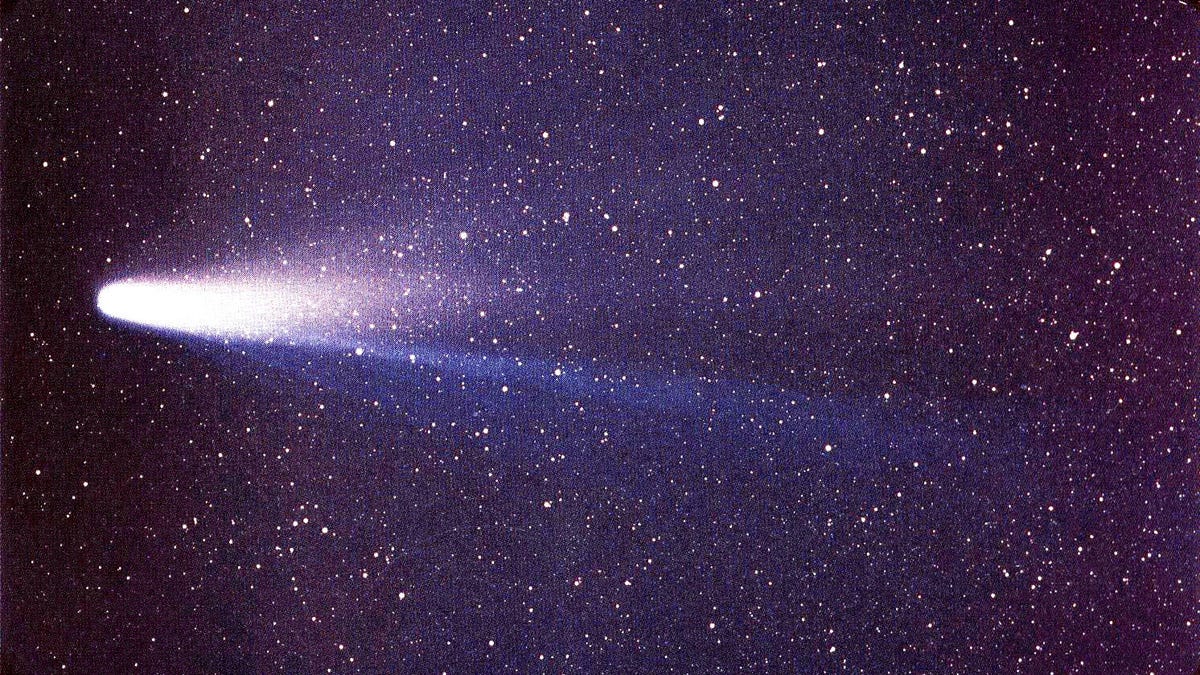Eta Aquarid Meteor Shower Is Peaking Now: How to Watch the Show
The annual shooting star show can be traced to debris left behind by the famed Halley's Comet.

Halley's Comet in 1986.
If you missed last month's Lyrid meteor shower, Earth is now drifting through another cloud of comet clutter that's primed to put on a striking show in the night sky. The Eta Aquarids take place around this time every year when bits of dust and other detritus left behind by Halley's Comet impact Earth's atmosphere and streak across the sky as they're obliterated.
The famous space snowball whips around the sun and through the inner solar system every 76 years, leaving behind a fresh delivery of dust. All that cosmic crud has accumulated over the centuries, creating such a significant cloud that the peak of this meteor shower seems to last for days.
Officially, the American Meteor Society projects that the shower will peak on Thursday evening into Friday morning, but the shower's broad peak means that the following night is likely to be just as exciting. Even after this weekend, you may still be able to catch a handful of meteors per hour all the way through May 10, provided you're in a location with ideal viewing conditions.
There is some advantage to heading out earlier in the week, as the waxing moon will be out and growing larger and brighter with each evening. That extra brightness can wash out some fainter shooting stars. That said, the best time to view the spectacle is actually the few hours before dawn, when the moon should be set.
This shower can also favor the Southern Hemisphere over the north, but it's still worth looking up late no matter where you are. North of the equator you might get to see 10 to 20 meteors per hour under clear, dark skies, but from the southern tropics that potential increases to as many as 60 per hour.
The Eta Aquarids can appear to emanate outward from the section of the sky occupied by the constellation Aquarius and, more specifically, from the star Eta Aquarii. If you can locate this star in the sky, it can be helpful to orient yourself with it in the center of your field of view when you're out skywatching.
The most important part of hunting shooting stars, though, is to get as far away from light pollution as possible and to pick a location with a wide view of clear night sky.
Dress appropriately for the weather, bring refreshments, give your eyes 15 minutes to adjust and spend at least an hour just watching the majestic cosmos scroll by, punctuated by an occasional streak of some space mote ceasing to exist.

